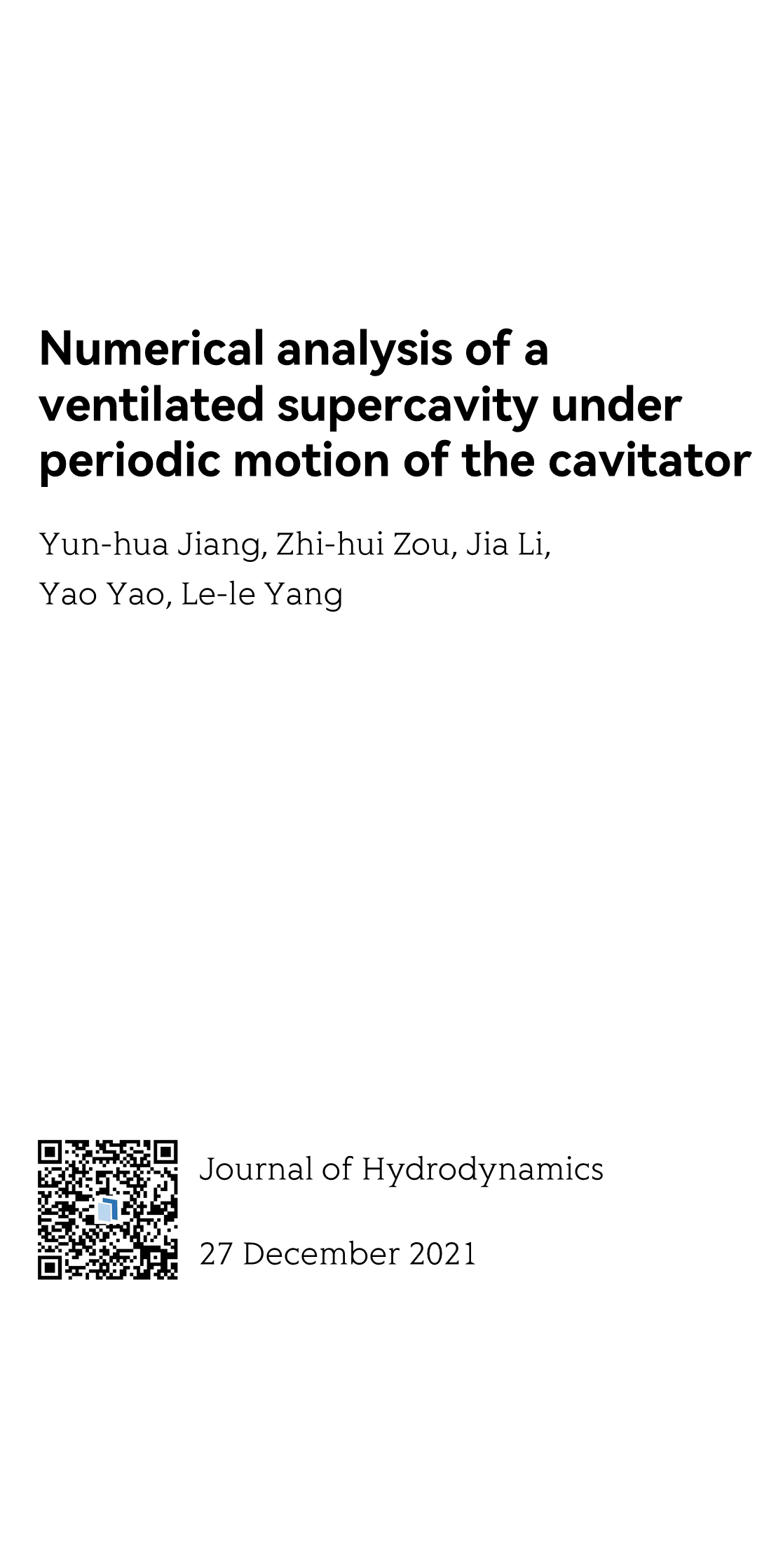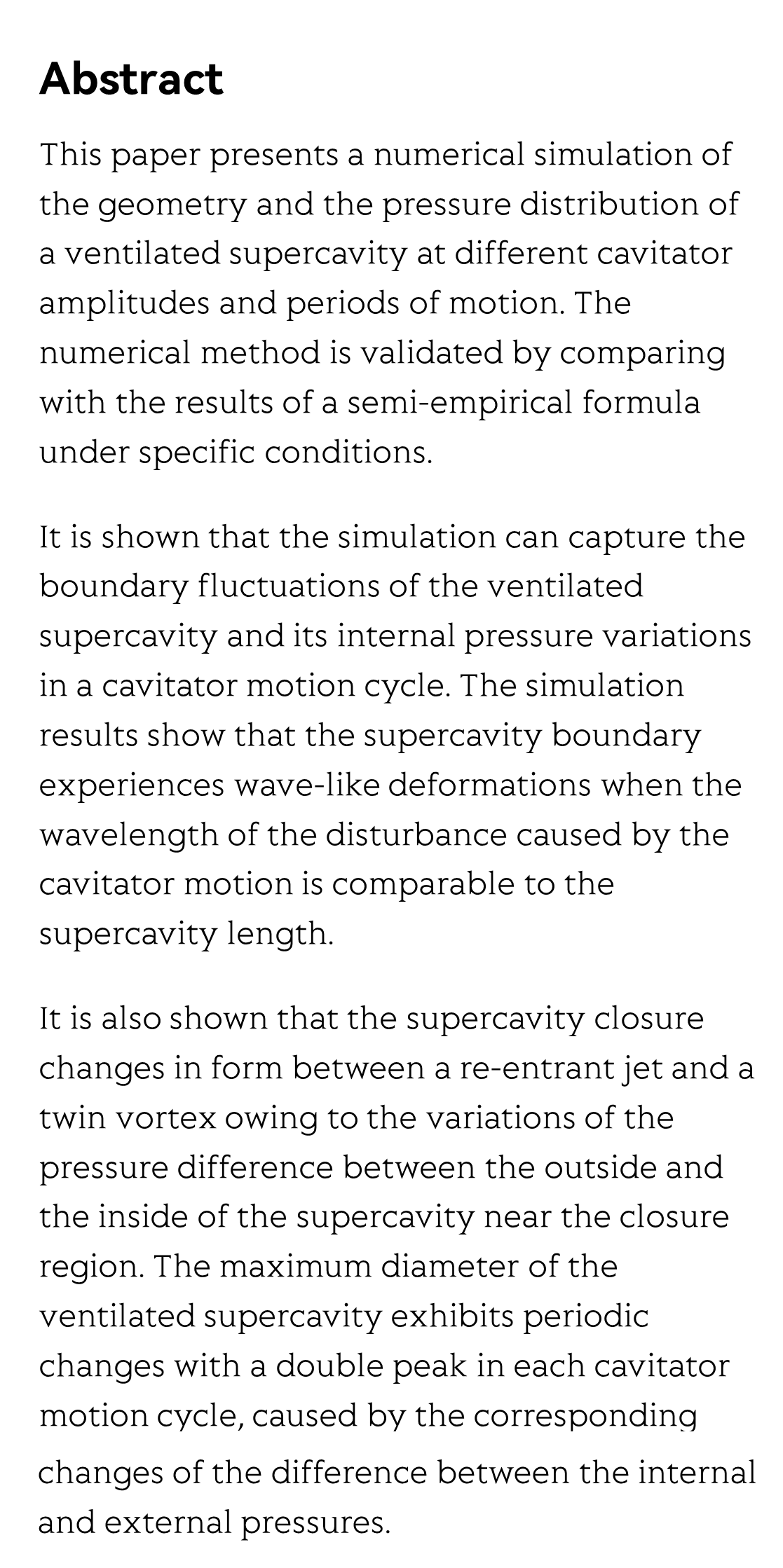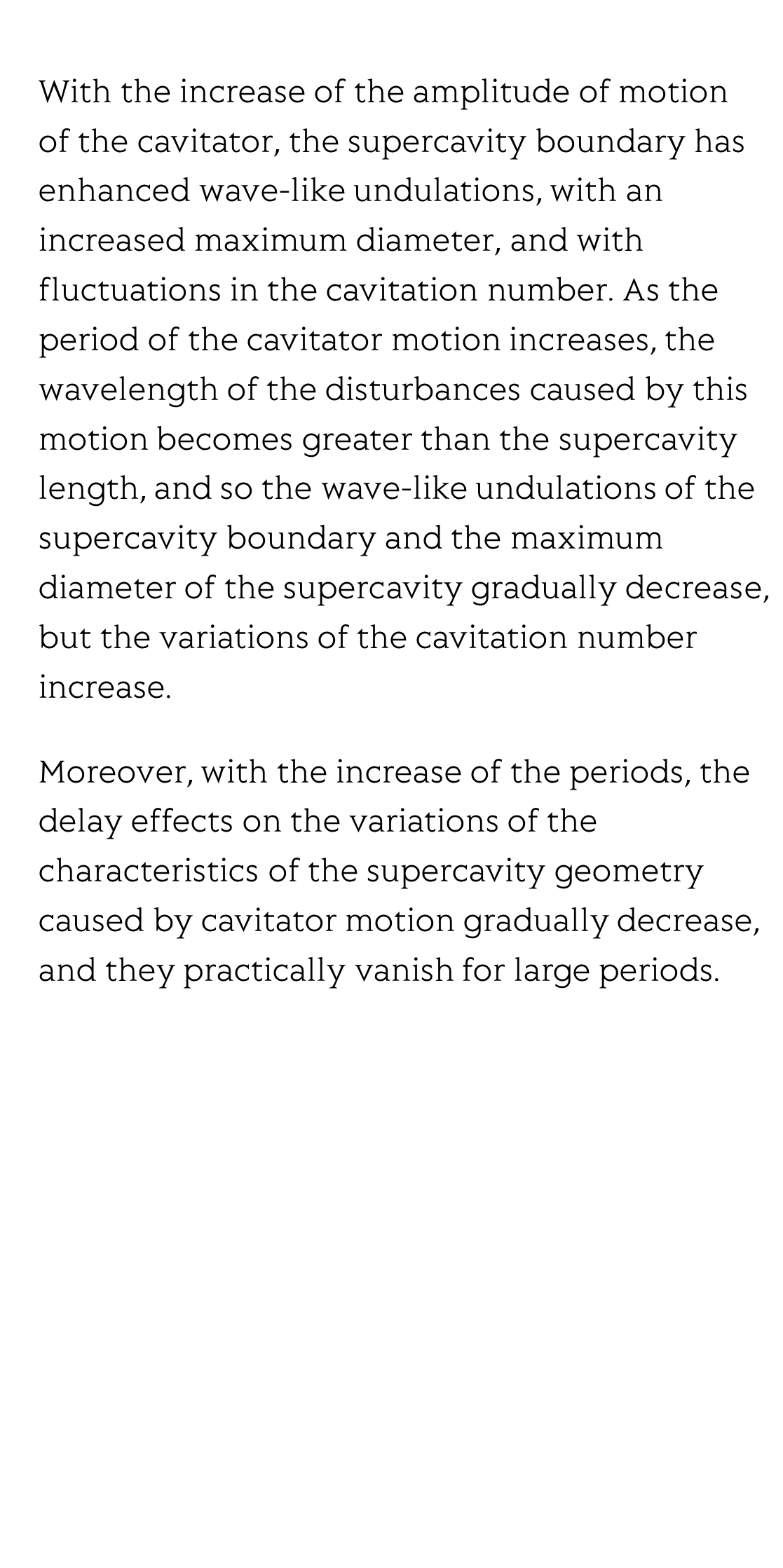(Peer-Reviewed) Numerical analysis of a ventilated supercavity under periodic motion of the cavitator
Yun-hua Jiang 蒋运华 ¹ ², Zhi-hui Zou 邹志辉 ¹ ², Jia Li ³, Yao Yao 要尧 ⁴, Le-le Yang 杨乐乐 ¹ ²
¹ School of Ocean Engineering and Technology, Sun Yat-sen University, Guangzhou, 510275, China
中国 广州 中山大学海洋工程与技术学院
² Southern Marine Science and Engineering Guangdong Laboratory (Zhuhai), Zhuhai, 519000, China
中国 珠海 南方海洋科学与工程广东省实验室(珠海)
³ Department of Aerospace Engineering, Harbin Engineering University, Harbin, 150001, China
哈尔滨工程大学 航天与建筑工程学院 航天工程系
⁴ AVIC Jonhon Optronic Technology Co., Ltd., Luoyang, 471003, China
中国 辽阳 中航光电科技股份有限公司
Abstract
This paper presents a numerical simulation of the geometry and the pressure distribution of a ventilated supercavity at different cavitator amplitudes and periods of motion. The numerical method is validated by comparing with the results of a semi-empirical formula under specific conditions.
It is shown that the simulation can capture the boundary fluctuations of the ventilated supercavity and its internal pressure variations in a cavitator motion cycle. The simulation results show that the supercavity boundary experiences wave-like deformations when the wavelength of the disturbance caused by the cavitator motion is comparable to the supercavity length.
It is also shown that the supercavity closure changes in form between a re-entrant jet and a twin vortex owing to the variations of the pressure difference between the outside and the inside of the supercavity near the closure region. The maximum diameter of the ventilated supercavity exhibits periodic changes with a double peak in each cavitator motion cycle, caused by the corresponding changes of the difference between the internal and external pressures.
With the increase of the amplitude of motion of the cavitator, the supercavity boundary has enhanced wave-like undulations, with an increased maximum diameter, and with fluctuations in the cavitation number. As the period of the cavitator motion increases, the wavelength of the disturbances caused by this motion becomes greater than the supercavity length, and so the wave-like undulations of the supercavity boundary and the maximum diameter of the supercavity gradually decrease, but the variations of the cavitation number increase.
Moreover, with the increase of the periods, the delay effects on the variations of the characteristics of the supercavity geometry caused by cavitator motion gradually decrease, and they practically vanish for large periods.
A review on optical torques: from engineered light fields to objects
Tao He, Jingyao Zhang, Din Ping Tsai, Junxiao Zhou, Haiyang Huang, Weicheng Yi, Zeyong Wei Yan Zu, Qinghua Song, Zhanshan Wang, Cheng-Wei Qiu, Yuzhi Shi, Xinbin Cheng
Opto-Electronic Science
2025-11-25
Flicker minimization in power-saving displays enabled by measurement of difference in flexoelectric coefficients and displacement-current in positive dielectric anisotropy liquid crystals
Junho Jung, HaYoung Jung, GyuRi Choi, HanByeol Park, Sun-Mi Park, Ki-Sun Kwon, Heui-Seok Jin, Dong-Jin Lee, Hoon Jeong, JeongKi Park, Byeong Koo Kim, Seung Hee Lee, MinSu Kim
Opto-Electronic Advances
2025-09-25





